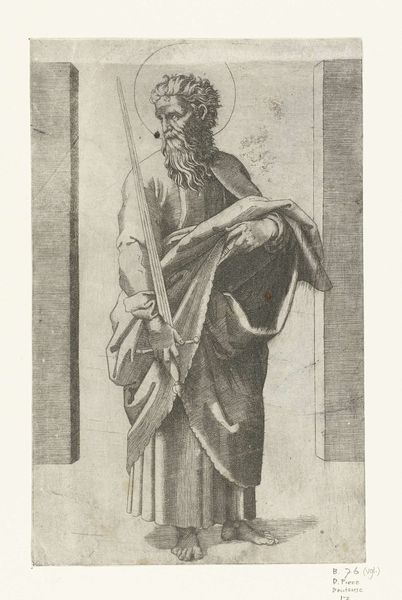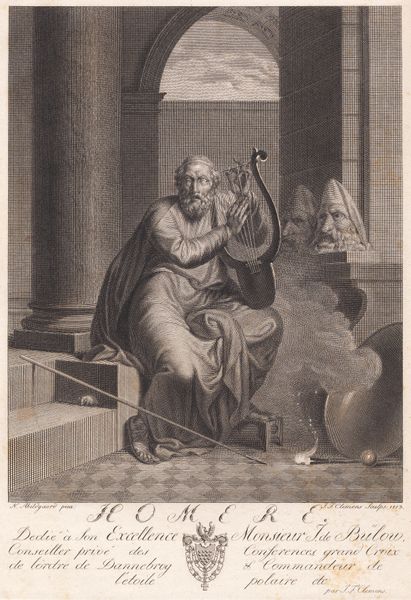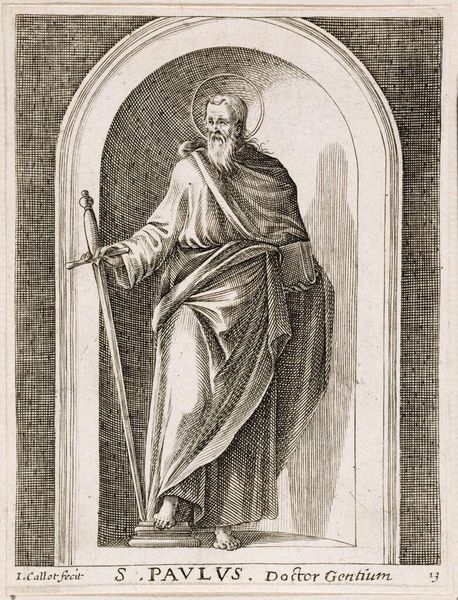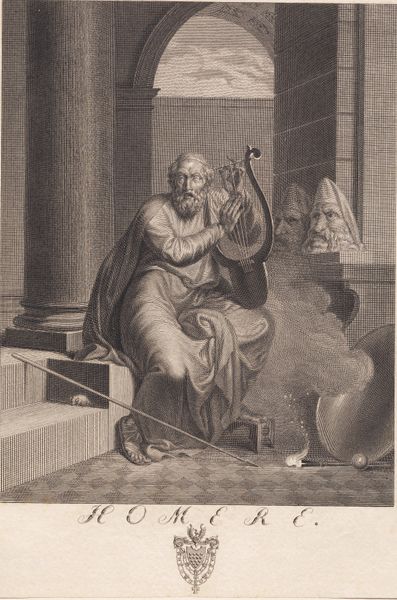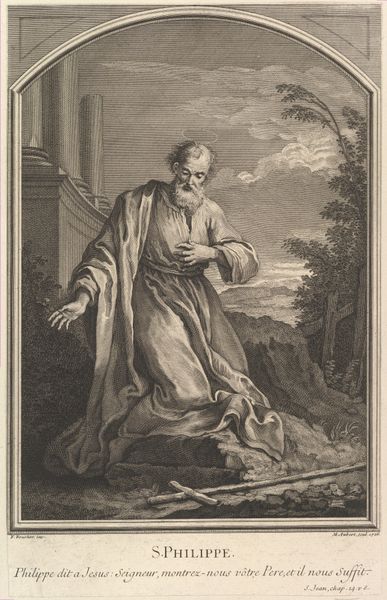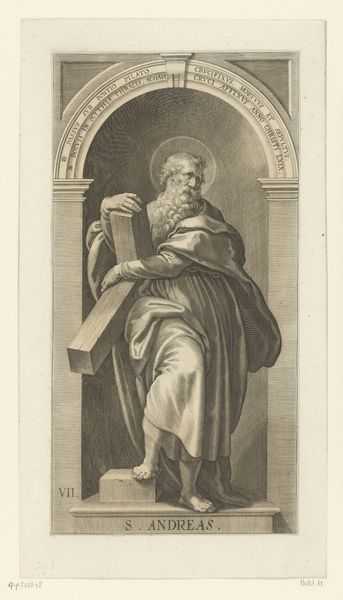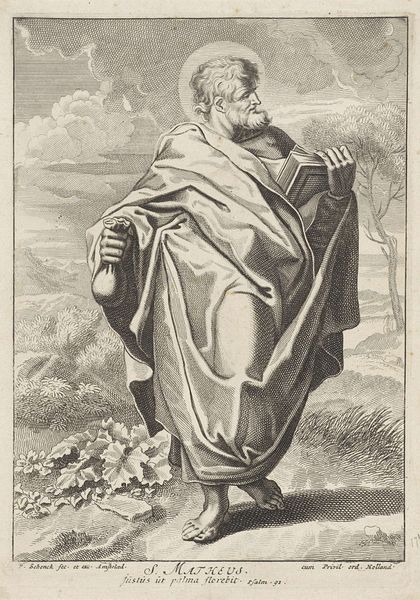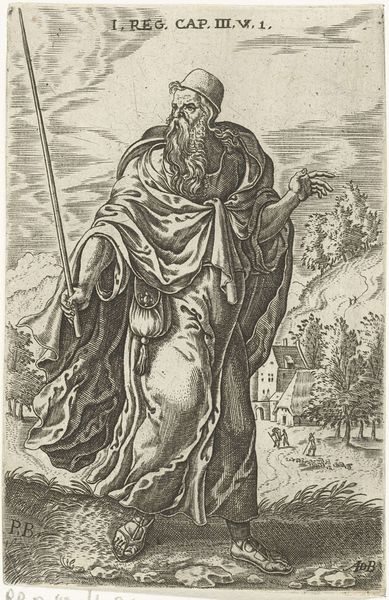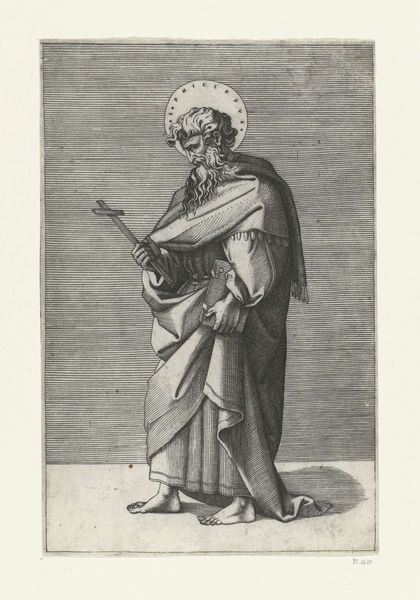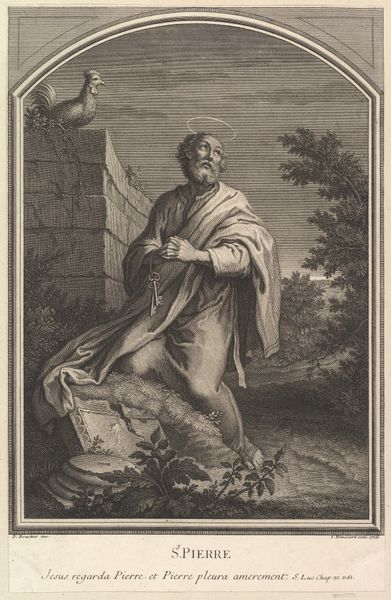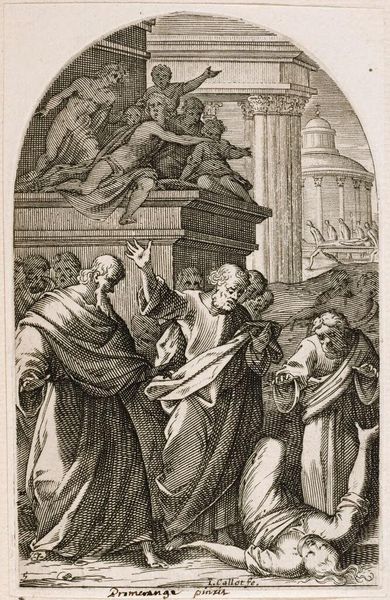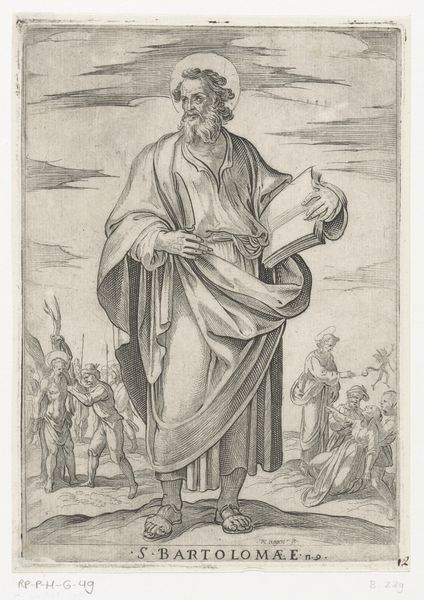
print, engraving
#
portrait
#
baroque
# print
#
history-painting
#
engraving
Dimensions: height 430 mm, width 320 mm
Copyright: Rijks Museum: Open Domain
Editor: Here we have Richard Collin's engraving, *Apostel Paulus*, dating from around 1650 to 1670. It's currently held at the Rijksmuseum. The figure of Paul, set against these classical ruins, is really striking. What can you tell us about the symbolic language at play here? Curator: Note how Paul carries both a sword and a book, which in art become immediate, recognizable symbols. The sword represents his martyrdom, but also the penetrating power of the Word, cutting through ignorance. The book, of course, signifies his epistles, his contribution to scripture. Editor: So, these objects define his identity? Curator: Precisely. And consider the setting: crumbling classical architecture. What does that suggest about the relationship between the emerging Christian faith and the established order of the Roman Empire? Editor: That the new faith would triumph over the old? A transfer of power, maybe? Curator: Absolutely. Think of the halo, too. It signals sainthood but is rendered here in this print with a certain restraint. It suggests not just divinity but enlightenment, understanding. How do these visual elements affect your interpretation of the historical narrative? Editor: Seeing the ruins helps me understand the historical context more clearly; it’s not just about religious doctrine, but also about societal change and how visual symbols conveyed these ideas. I appreciate that. Curator: The power of symbols lies in their ability to trigger recognition, spark conversation across cultures and time, and reinforce cultural memory. Each element connects to something bigger.
Comments
No comments
Be the first to comment and join the conversation on the ultimate creative platform.
